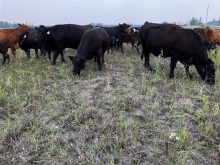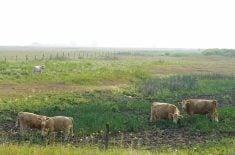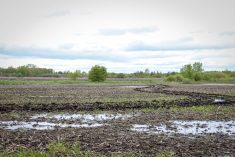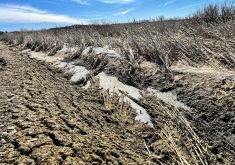Agroup of scientists are developing more accurate drought and harvest forecasts for Indonesia using tree rings, historic rice production figures and sea surface temperature data.
Indonesia is one of the world’s most populous nations and a major producer of rice, cocoa, coffee and tobacco.
But the country is regularly at risk of drought caused by the El Nino phenomenon in which the eastern Pacific Ocean heats up, with wet weather moving toward the east and leaving drier weather in the west around Southeast Asia and Australia.
Read Also

Seeding Indigenous agricultural prosperity
National Circle for Indigenous Agriculture and Food says Indigenous agricultural success needs strong relationships.
U. S. scientist Rosanne D’Arrigo and her colleague Robert Wilson from Scotland’s University of St. Andrews are working on simplified statistical models that can predict drought ahead of the main September-December rice-planting season and how severe the drought might be.
The models focus on Java, one of the world’s most densely populated islands with 120 million people.
“We’re trying to develop simple, predictive model of drought and crop productivity on Java. There are complex models out there but you need to have a local type of analysis and something simple for local people to use,” said D’Arrigo, of the Lamont-Doherty Earth Observatory of the United States.
A key part of the model is using sea surface temperature data from the tropical Pacific and from the Indian Ocean. A separate phenomenon called the Indian Ocean Dipole can also cause drought in Australia and affect rainfall in Indonesia.
Other data such as sea-level pressure and wind indexes are also used. The data are examined several months before the usual onset of the monsoon to try to accurately predict likely rainfall patterns over Indonesia.
D’Arrigo said she also found good agreement between the sea surface temperature model, a local drought index in Java and government data on crop productivity.
This suggested “we could estimate not only the coming drought condition but also the kind of crop season you would expect to have,” she said, adding she was also looking at a predictive model for the onset of the monsoon.
Her team also looked at tree rings from old teak trees in Java and Sulawesi island to build up a chronology of past droughts and found a very strong correlation with El Nino.
The oldest teak tree ring records came from the 16th century, she said, but added it had been hard work finding the remaining centuries-old teak trees “that haven’t been cut for furniture.”
China Premier Hears About Farmers’ Hardships
Chinese Premier Wen Jiabao heard an earful of complaints about rural life when he joined a discussion of parliamentary delegates that included farmers, state media reported March 11.
The complaints ranged from farmers’ difficulties in obtaining bank loans to an inability to make any money to the failure of some government stimulus measures to trickle down to individual farmers.
Wen reiterated Beijing’s promise to increase investment in the countryside to care for its rural population, the People’s Daily said of the encounter on Tuesday.
Farmers who have become migrant labourers were among those worst hit from an economic downturn that has forced the closure of thousands of export-dependent factories and caused a slump in the construction industry.
“We hope banks could lower their threshold and lend more; it is difficult for farmers to borrow money,” Gu Shuangyan, a parliamentary delegate from Inner Mongolia, told Wen during the discussion.
She said farmers can barely make money by growing grains alone and have to turn to other businesses, but she noted that many were short of money to do so, the newspaper reported.
Farmers also are not able to benefit from higher prices which Beijing agreed to pay for state stockpiling, she said.
Local granaries have cut the prices they pay to farmers, citing high moisture in the grain, while farmers have had to incur the extra expense of transporting their grains a long distance to designated warehouses, said Gu.
“Many farmers were still unable to sell their grains and their grains could rot if it rains.”
China will spend an extra $10 billion, with much of that going toward building reserves of grain and edible oils and on direct subsidies to grain farmers.
Premier Wen asked Gu to tell farmers that the government would do its best to purchase all the extra grain.
“If market prices are too low, the government will come out with minimum prices and will not let them make losses,” Wen was quoted as saying.














